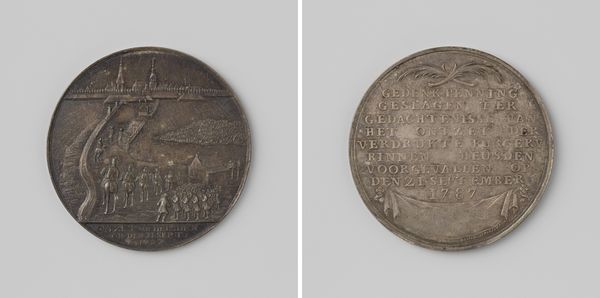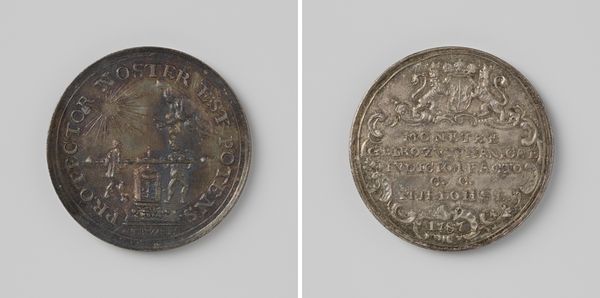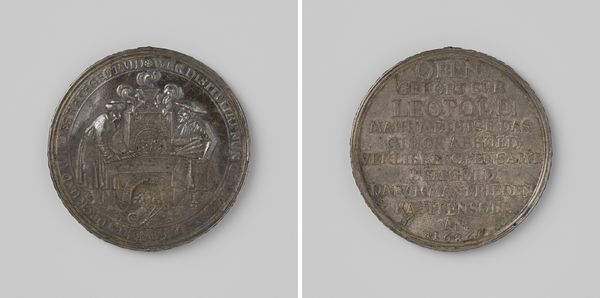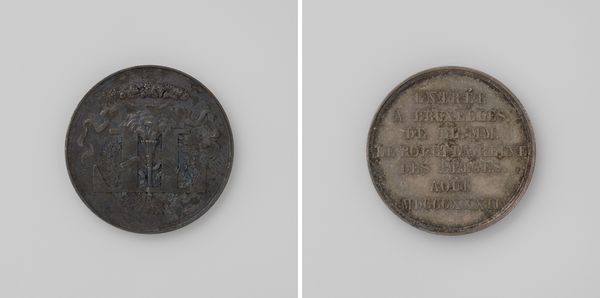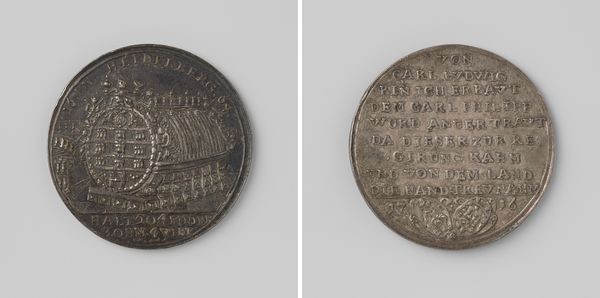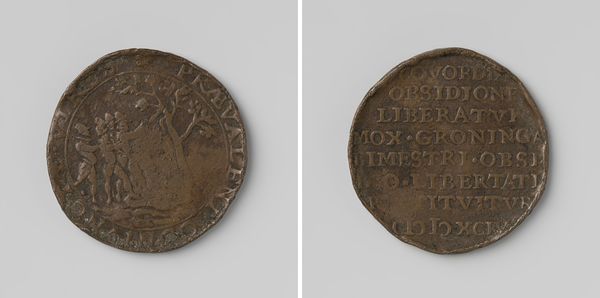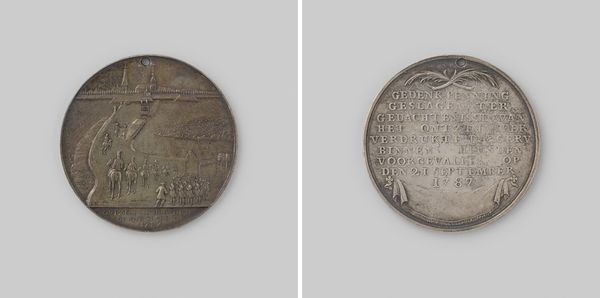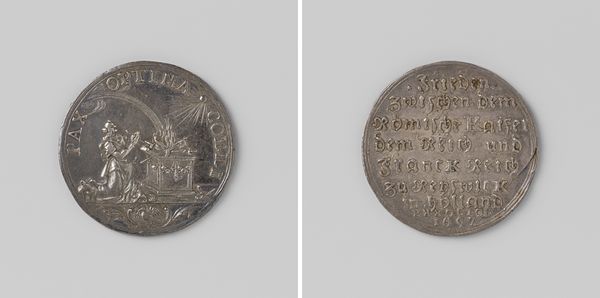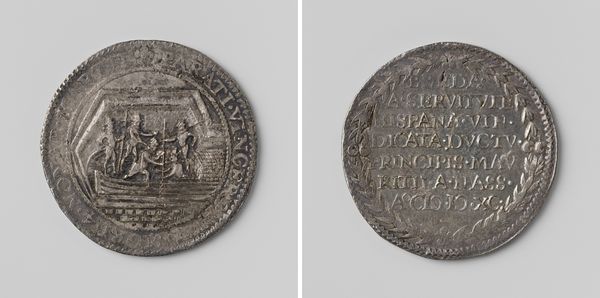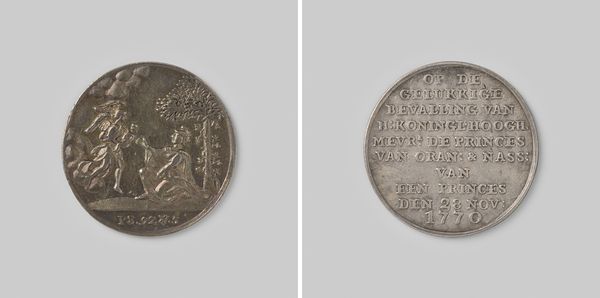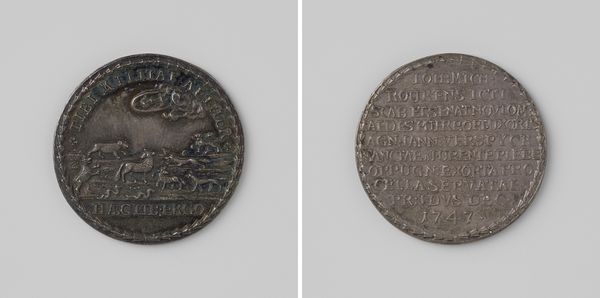
metal, relief
#
portrait
#
baroque
#
metal
#
relief
#
history-painting
Dimensions: diameter 5.3 cm, weight 45.21 gr
Copyright: Rijks Museum: Open Domain
This small silver medal was created by Sebastian Dadler to mark the centennial of the Augsburg Confession in 1630. Dadler was a master of die-cutting, a skilled practice used to produce coins and medals. The process involves engraving a design into a hardened steel die, which is then used to strike the image onto a metal blank. Here, the dense, cool qualities of silver lend themselves well to the crispness of the design, allowing for fine details and lettering. Objects like this were not only commemorative, but also functioned as symbols of allegiance and identity. In this case, the medal celebrates a key moment in the history of Protestantism. Considering its small size, this object would have been easily portable. This speaks to the wide distribution of political and religious ideas during this period. So next time you encounter a medal or coin, think about the labor and skill involved in its making, and how this most humble of art forms can tell us a much larger story.
Comments
No comments
Be the first to comment and join the conversation on the ultimate creative platform.
